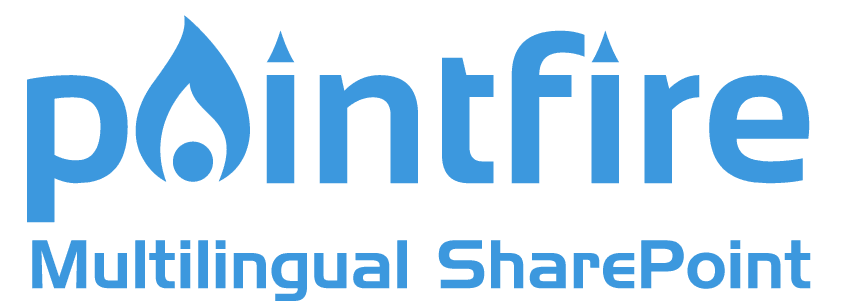While SharePoint does provide certain multilingual features, we find that our clients require a little more flexibility and responsiveness in the multilingual user interface and content delivery as well as a simplified method to manage multilingual content and documents. PointFire provides this solution as well as providing many other useful tools for customizing the look and behavior of your SharePoint sites.
Here is Part I of this series that will cover the reasons you need PointFire in a multilingual SharePoint environment.
Translation Control
Translation Control
If you look at the list of elements that the SharePoint MUI doesn't support, PointFire supports all of the rest, with very few exceptions (some aspects of Silverlight and InfoPath, for which we provide workarounds). You can see a few specific scenarios in the first few pages of the PointFire 2010 User GuideGuide http://community.icefire.ca/index.php?/Knowledgebase/Article/View/97/9/pointfire-2010-user-guide
First and foremost: content. PointFire does not only handle the "chrome" but user-generated content as well. It reaches inside html pages and inside lists and libraries to translate what you want it to translate. It intercepts ajax calls, RSS feeds, and some Javascript to translate as appropriate. Here is a partial list of elements that PointFire does and the SharePoint MUI doesn't
webpart titles and properties
custom webparts
templates that MUI doesn't support, such as blogs and workspaces
custom properties
custom additions to various menus & ribbons
search refiners
permission types
group names
multi-valued columns values
calculated text fields
ajax
embedded xml
embedded javascript
alert & popup messages
dialogue boxes
custom new/edit/ etc forms
questionnaires
views
folder names
In addition, it does some translations with less effort than the MUI in many cases. For instance, if you add a custom list and put it in the quick-launch menu, then provide the translation of the list name, the translated list name will not appear in the menu unless you edit it separately. With PointFire, you only have to add the translation in one place. In fact, if the same list name is used elsewhere in a different site, PointFire can inherit that translation from another site.
Of course, translation is only one of the 4 localization techniques that PointFire makes available. There are much more powerful filtering techniques that allow you to tag content in lists, libraries, pages, and webparts as being in one language or the other, allowing SharePoint to assemble the page in the user's language while using the same URL.
